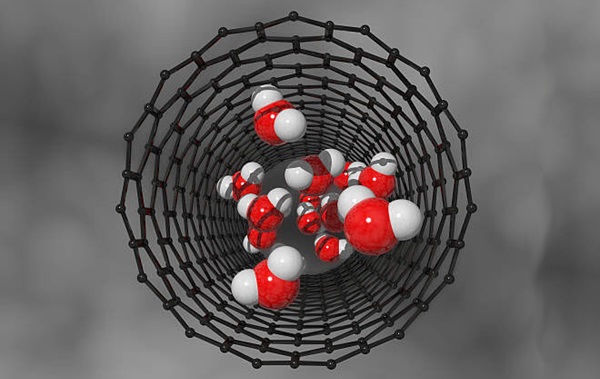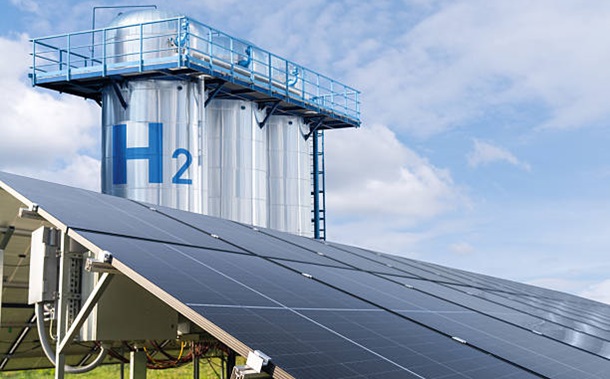Decreasing Microbial Fuel Cell Start-Up Time Using Multi-Walled Carbon Nanotubes
Downloads
The bioelectrochemical systems are a sustainable technology that can be used to obtain electricity and/or reduced compounds. However, this novel technology presents several challenges prior to its implementation at full-scale. The aim of the present study was to evaluate different nanomaterials of electrode and mediators to increase the performance of BioElectrochemical Systems production. In order to achieve this objective, it was compared the use of Multiwall Carbon Nanotubes and Multiwall Carbon Nanotubes plus electron exogenous mediator (Meldola's Blue) against plain graphite anode in order to evaluate the overall start-up time and other electro-chemical features. The use of multi-walled carbon nanotubes reduces substantially (by 75%) the start-up time required in a microbial fuel cell to produce stable voltage both, with and without the use of mediator compare to the plain anode. This reduction of the required time can be a consequence of the formation of anodic binders between this compound and the bacteria. With the independence of the start-up time, the current production was similar in the three studied cases, about 650 mV. Use of nanotubes modified anode surfaces might be especially interesting in cases of recovery after unstable operation of a microbial fuel cell, and/or reducing the start-up time for the generation of energy from new systems.
Downloads
Rahimnejad, Mostafa, Ali Asghar Ghoreyshi, Ghasem Najafpour, and Tahereh Jafary. "Power Generation from Organic Substrate in Batch and Continuous Flow Microbial Fuel Cell Operations.” Applied Energy 88, no. 11 (November 2011): 3999–4004. doi:10.1016/j.apenergy.2011.04.017.
Liu, Xian-Wei, Xue-Fei Sun, Yu-Xi Huang, Guo-Ping Sheng, Shu-Guang Wang, and Han-Qing Yu. "Carbon Nanotube/chitosan Nanocomposite as a Biocompatible Biocathode Material to Enhance the Electricity Generation of a Microbial Fuel Cell.” Energy & Environmental Science 4, no. 4 (2011): 1422. doi:10.1039/c0ee00447b.
Fermoso, F. G., M. J. Fernández-Rodríguez, A. Jiménez-Rodríguez, A. Serrano, and R. Borja. "Suitability of Olive Oil Washing Water as an Electron Donor in a Feed Batch Operating Bio-Electrochemical System.” Grasas y Aceites 68, no. 2 (June 5, 2017): 198. doi:10.3989/gya.0216171.
Logan, Bruce, Shaoan Cheng, Valerie Watson, and Garett Estadt. "Graphite Fiber Brush Anodes for Increased Power Production in Air-Cathode Microbial Fuel Cells.” Environmental Science & Technology 41, no. 9 (May 2007): 3341–3346. doi:10.1021/es062644y.
Rabaey, Korneel, and Willy Verstraete. "Microbial Fuel Cells: Novel Biotechnology for Energy Generation.” Trends in Biotechnology 23, no. 6 (June 2005): 291–298. doi:10.1016/j.tibtech.2005.04.008.
Ieropoulos, Ioannis, John Greenman, and Chris Melhuish. "Urine Utilisation by Microbial Fuel Cells; Energy Fuel for the Future.” Phys. Chem. Chem. Phys. 14, no. 1 (2012): 94–98. doi:10.1039/c1cp23213d.
Srikanth, S., T. Pavani, P.N. Sarma, and S. Venkata Mohan. "Synergistic Interaction of Biocatalyst with Bio-Anode as a Function of Electrode Materials.” International Journal of Hydrogen Energy 36, no. 3 (February 2011): 2271–2280. doi:10.1016/j.ijhydene.2010.11.031.
Sharma, Tushar, G. Suresh Kumar, and Jitendra S. Sangwai. "Enhanced Oil Recovery Using Oil-in-Water (o/w) Emulsion Stabilized by Nanoparticle, Surfactant and Polymer in the Presence of NaCl.” Geosystem Engineering 17, no. 3 (May 4, 2014): 195–205. doi:10.1080/12269328.2014.959622.
Banks, C. E., and R. G. Compton. "New Electrodes for Old: From Carbon Nanotubes to Edge Plane Pyrolytic Graphite." Analyst 131, no. 1 (2006): 15-21. https://doi.org/10.1039/b512688f
Sharma, T., A. L. Mohana Reddy, T. S. Chandra, and S. Ramaprabhu. "Development of Carbon Nanotubes and Nanofluids Based Microbial Fuel Cell." International Journal of Hydrogen Energy 33, no. 22 (2008): 6749-54. doi:10.1016/j.ijhydene.2008.05.112
Correa-Duarte, M. A., N. Wagner, J. Rojas-Chapana, C. Morsczeck, M. Thie, and M. Giersig. "Fabrication and Biocompatibility of Carbon Nanotube-Based 3d Networks as Scaffolds for Cell Seeding and Growth." Nano Letters 4, no. 11 (2004): 2233-36. doi:10.1021/nl048574f
Liang, P., H. Wang, X. Xia, X. Huang, Y. Mo, X. Cao, and M. Fan. "Carbon Nanotube Powders as Electrode Modifier to Enhance the Activity of Anodic Biofilm in Microbial Fuel Cells." Biosensors and Bioelectronics 26, no. 6 (2011): 3000-04. doi: 10.1016/j.bios.2010.12.002
Tsai, H. Y., C. C. Wu, C. Y. Lee, and E. P. Shih. "Microbial Fuel Cell Performance of Multiwall Carbon Nanotubes on Carbon Cloth as Electrodes." Journal of Power Sources 194, no. 1 (2009): 199-205. doi: 10.1016/j.jpowsour.2009.05.018
Liu, H., R. Ramnarayanan, and B. E. Logan. "Production of Electricity during Wastewater Treatment Using a Single Chamber Microbial Fuel Cell." Environmental Science and Technology 38, no. 7 (2004): 2281-85. doi: 10.4314/ijest.v3i4.68540
Ieropoulos, Ioannis A., John Greenman, Chris Melhuish, and John Hart. "Comparative Study of Three Types of Microbial Fuel Cell.” Enzyme and Microbial Technology 37, no. 2 (July 2005): 238–245. doi:10.1016/j.enzmictec.2005.03.006.
Song, Y. C., D. S. Kim, J. H. Woo, B. Subha, S. H. Jang, and S. Sivakumar. "Effect of Surface Modification of Anode with Surfactant on the Performance of Microbial Fuel Cell." International Journal of Energy Research 39, no. 6 (2015): 860-68. doi: 10.1002/er.3284
Kumar, G. G., V. G. S. Sarathi, and K. S. Nahm. "Recent Advances and Challenges in the Anode Architecture and Their Modifications for the Applications of Microbial Fuel Cells." Biosensors and Bioelectronics 43, no. 1 (2013): 461-75. doi: 10.1016/j.bios.2012.12.048
Guo, K., S. Freguia, P. G. Dennis, X. Chen, B. C. Donose, J. Keller, J. J. Gooding, and K. Rabaey. "Effects of Surface Charge and Hydrophobicity on Anodic Biofilm Formation, Community Composition, and Current Generation in Bioelectrochemical Systems." Environmental Science and Technology 47, no. 13 (2013): 7563-70. doi: 10.1021/es400901u
Zhu, Nengwu, Xi Chen, Ting Zhang, Pingxiao Wu, Ping Li, and Jinhua Wu. "Improved Performance of Membrane Free Single-Chamber Air-Cathode Microbial Fuel Cells with Nitric Acid and Ethylenediamine Surface Modified Activated Carbon Fiber Felt Anodes.” Bioresource Technology 102, no. 1 (January 2011): 422–426. doi:10.1016/j.biortech.2010.06.046.
Li, Hongying, Bo Liao, Juan Xiong, Xingwang Zhou, Huozhen Zhi, Xiang Liu, Xiaoping Li, and Weishan Li. "Power Output of Microbial Fuel Cell Emphasizing Interaction of Anodic Binder with Bacteria.” Journal of Power Sources 379 (March 2018): 115–122. doi:10.1016/j.jpowsour.2018.01.040.
Uría, Naroa, David Sánchez, Roser Mas, Olga Sánchez, Francesc Xavier Muñoz, and Jordi Mas. "Effect of the Cathode/anode Ratio and the Choice of Cathode Catalyst on the Performance of Microbial Fuel Cell Transducers for the Determination of Microbial Activity.” Sensors and Actuators B: Chemical 170 (July 2012): 88–94. doi:10.1016/j.snb.2011.02.030.
- This work (including HTML and PDF Files) is licensed under a Creative Commons Attribution 4.0 International License.



















